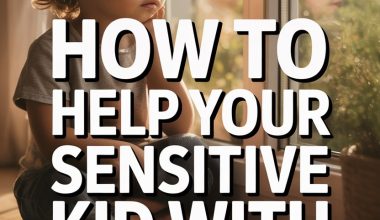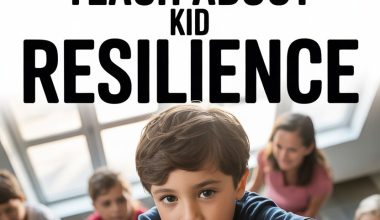Emotional meltdowns are basically a rite of childhood.
Whether it’s the toddler tantrum over the “wrong” socks, or the pre‑teen drama because, apparently, the word “no” is a personal attack—parents everywhere have felt the sting (and volume) of Big Feelings gone rogue.
Good news: emotional control isn’t something kids either have or don’t—it’s a skill. And like all skills, it gets better with practice (even if the practice sometimes involves a bit of shrieking on the kitchen floor).
Here are five playful, do‑them‑tonight ideas for helping kids master their inner emotional ninja.
1. The Power of Name That Feeling
Before a child can control a feeling, they need to know what it is. Yet, most little ones’ emotional vocabulary is somewhere between “happy” and “grumpy.” Sometimes, that’s as advanced as it gets. Here’s where you get to play detective.
Try making a game out of identifying emotions. During story time, ask: “What do you think that character is feeling?” Mix it up—pull dramatic faces and have your child guess: “Am I shocked, or did I just sniff a lemon?”
For older children, swap emotional charades for a family “emoji show.” Each person describes their day using only emojis, then everyone guesses the emotion behind each one.
Silly? Sure. But you’re giving your child the words (and the practice) to say, “I’m frustrated,” before it comes out as, say, a flying shoe.
Research from Yale’s Center for Emotional Intelligence highlights how kids with a richer emotional vocabulary are better at self‑regulating and less likely to lash out.
Bonus: You’ll probably get a few Oscar‑worthy performances during your living‑room charades sessions.
2. The Calm‑Down Menu
Ever noticed how adults rarely get sent to their room to “calm down”? We’re meant to know how to do it. For kids, though, calming down can feel like being told to “just relax” during a dental appointment. (Spoiler: doesn’t work.)
Help your child create their own custom calm‑down menu. Grab some paper, crayons, and a dash of artistic chaos.
Together, brainstorm a list of activities that help turn the emotional temperature down—jumping on the spot, squeezing a pillow, listening to music, blowing bubbles, or reading a favourite book. Draw or write each option on a card or poster and pop it somewhere visible.
The trick is to practise picking from the menu before emotions run wild. Make it a regular ritual: “Feeling cross? What’s your pick from the calm‑down menu?” Over time, your child learns they have options besides full‑volume wailing.
There’s strong evidence that teaching coping strategies boosts resilience and emotional regulation.
3. Emotion Freeze Tag
Sometimes, big feelings need to move before they’re ready to settle down. Enter: Emotion Freeze Tag—a classic game, but with a twist.
During tag, when someone is tapped and “frozen,” call out an emotion (“Show us your best angry face!” or “Let’s see a nervous statue!”). The child holds that pose and expression.
To become “unfrozen,” another player must make a silly face or do something kind—like a gentle high five or an over‑the‑top compliment.
This simple game gives kids a safe space to try on emotions and practise switching from one feeling to another (which is, let’s be honest, one of the trickiest parts of emotional control).
It also sneaks in a bit of movement, which research from the American Academy of Pediatrics links with improved self‑regulation skills in children.
4. The Magic Pause Button
Wish you could press “pause” on your child’s outburst? Good news: you can teach them to do just that—minus the remote control.
Introduce the idea of a “magic pause button”—an invisible button each person carries, pressed whenever they feel a storm brewing inside.
Model it yourself when you’re frazzled: “Oh, I can feel my grumpy gremlin showing up. I’m pressing my pause button and taking three dragon breaths.”
Make pressing the button fun, not a punishment. You can even get crafty and create paper buttons, badges, or wearables, especially for little ones who love a prop.
The real magic is in building the habit of pausing: a few deep breaths, a count to five, a squish of a stress ball—whatever suits your child.
Studies show that pausing before reacting is a powerful self‑regulation tool, helping kids interrupt the knee‑jerk “explode first, think later” response.
5. Storytime Replays
Ever wish you could watch a replay of one of your child’s epic meltdowns, with slow‑mo and commentary? While that would be… illuminating, a simple “storytime replay” is almost as good (and far less likely to go viral).
Later—when everyone’s emotions have cooled—snuggle up for a gentle chat. “Remember when you were really upset about bedtime last night? What was going on in your mind? If you could have a do‑over, what might you try next time?”
You can even give the meltdown a silly title: “The Case of the Missing Purple Cup” or “Attack of the Bedtime Pajama Pants.” This playful approach takes the sting out of slip‑ups.
It also helps kids reflect on big feelings and brainstorm solutions for next time—key ingredients for building emotional control, according to experts from the Child Mind Institute.
When Everyday Chaos Teaches Emotional Control
No parent expects a Zen master in the body of a six‑year‑old. Most of us would settle for a day without anyone weeping into their cereal.
The secret? Emotional control blooms in messy, everyday moments—when you name the feeling, offer a toolkit, turn a meltdown into a game, or laugh about the time someone threw their Wellies into a tree.
Give these playful ideas a go. You might not banish every tantrum, but you’ll help your child build the skills that last a lifetime.
And if nothing else, your charades face will keep everyone entertained.
Hang in there, you’re doing brilliantly—even when the socks are “wrong.”





